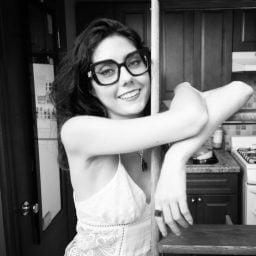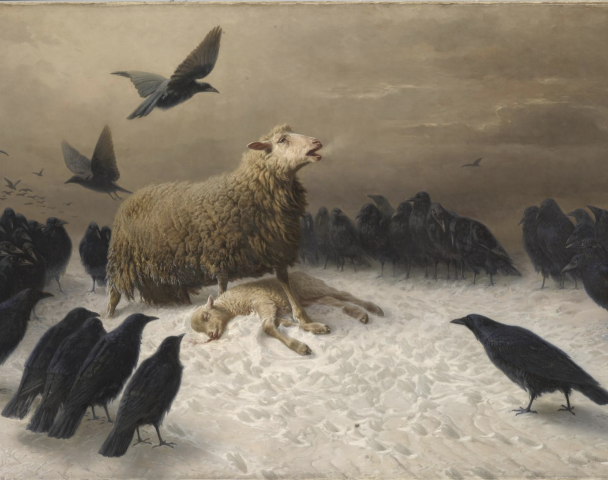Art & Exhibitions
The Italian Artistic Epicenter That Sparked the Renaissance Gets the Met Spotlight
The museum's showcase of Siena artists aims to reshape the way we think of the Italian Renaissance.
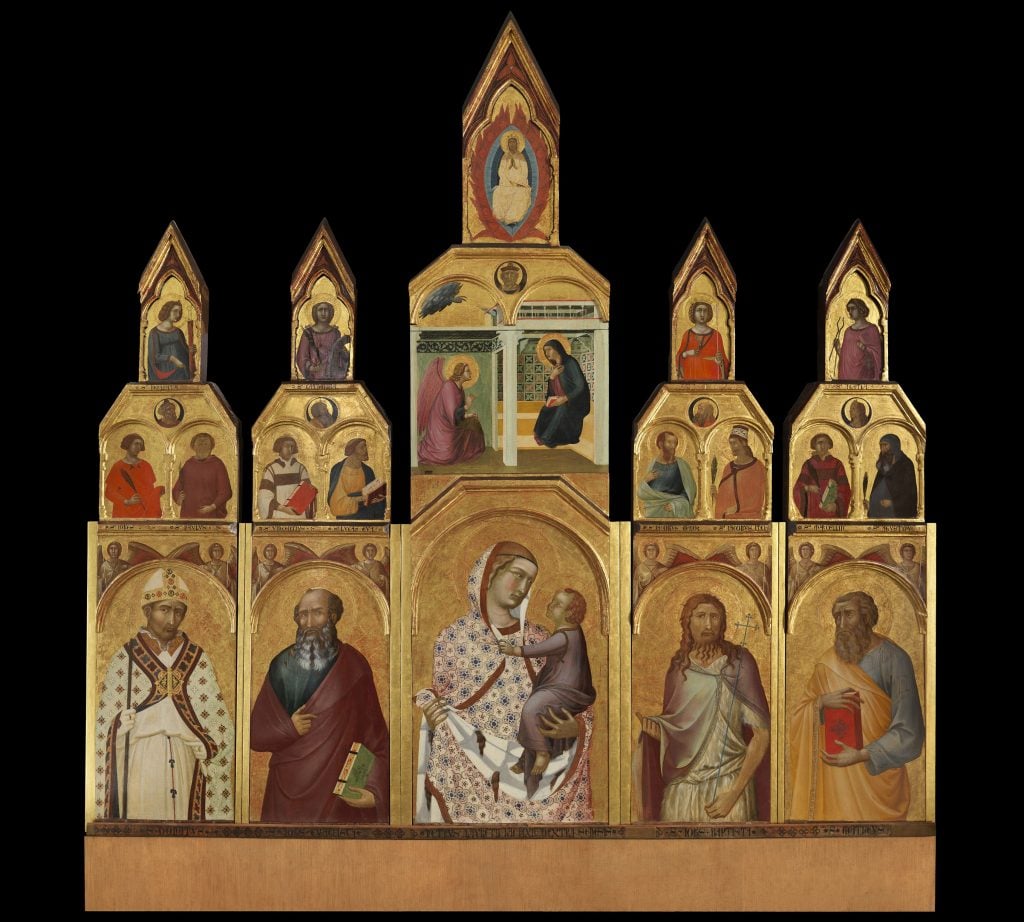
This fall, the Metropolitan Museum of Art’s highly anticipated “Siena: The Rise of Painting 1300–1350” will trace how an Italian city served as the foundation of a continent-wide artistic rebirth.
The show will unveil 100 paintings, sculptures, and relics hailing from the oft-overlooked early Renaissance movement that took shape in Siena during the 14th century. Organized in partnership with London’s National Gallery, this first-ever U.S. museum survey of the Sienese Trecento (Italian for 1300s) has harnessed the organizing institutions’ immense firepower to reunite the pieces of some major artworks that have been dispersed throughout the world due to the era’s relative obscurity.
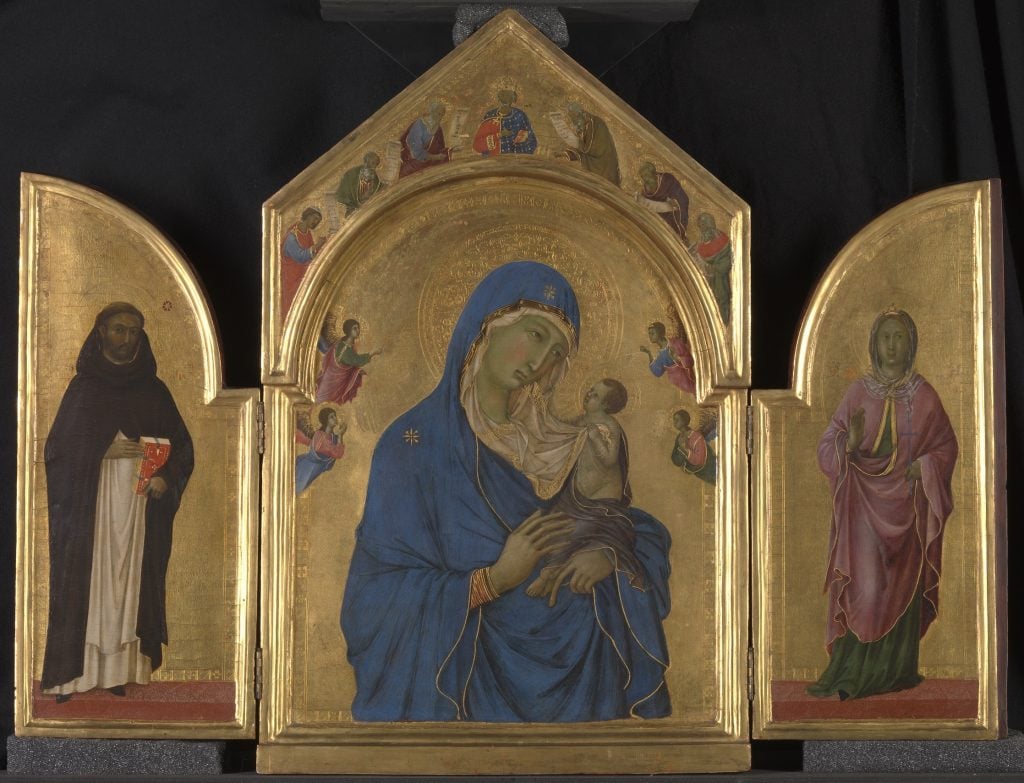
Duccio di Buoninsegna, The Virgin and Child with Saints Dominic and Aurea (ca. 1312 – 15). © The National Gallery, London.
Their efforts will demonstrate how this art-historical moment set the stage for Western painting as we know it today.
“Siena was an epicenter of artistic innovation and ambition in the 14th and 15th century,” said Met director and CEO Max Hollein in a statement. “This monumental exhibition will bring together the most important group of early Sienese paintings ever assembled outside of Siena—offering a once-in-a-lifetime chance to explore the influence of this extraordinary artistic center.”
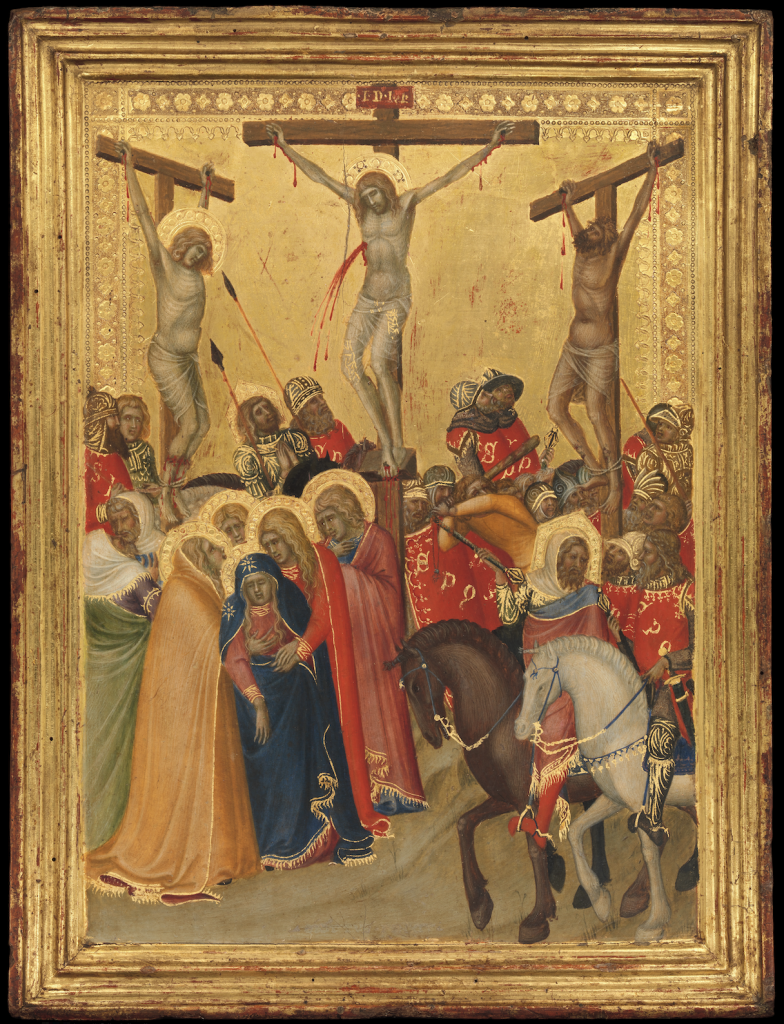
Pietro Lorenzetti, The Crucifixion (1340s). Courtesy of the Metropolitan Museum of Art.
When it comes to the Renaissance, 15th-century artists of nearby Florence such as Leonardo da Vinci and Michelangelo typically hog all the acclaim. “The Rise of Painting” reasserts the foundations laid out for those superstars by Sienese masters like Duccio di Buoninsegna and his student Simone Martini, as well as the brothers-in-law Ambrogio and Pietro Lorenzetti.
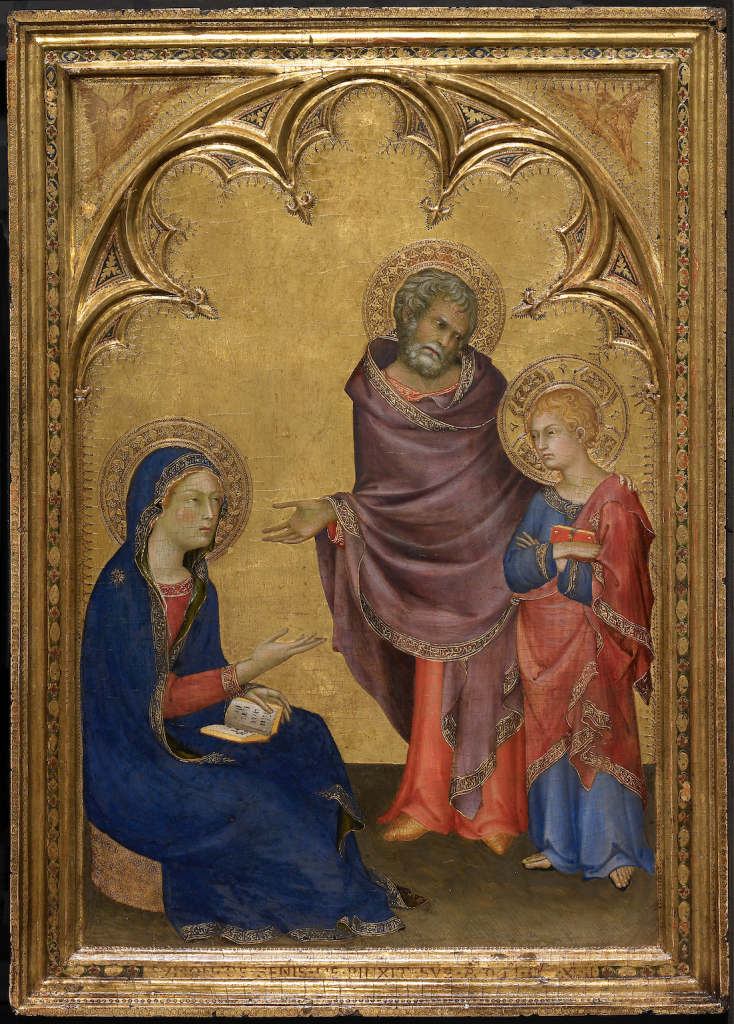
Simone Martini, Christ Discovered in the Temple (1342). © National Museums Liverpool.
Artists active during Siena’s golden age drew on the independent republic’s rising humanistic values, infusing their figures with palpable, relatable expressions that broke from the stoic gazes of their forebears’ work.
“The distinctive artistic language of Duccio, the Lorenzetti brothers, Simone Martini, and their contemporaries completely recast the course of European painting,” the Met’s curator of European paintings, Stephan Wolohojian, added in press materials. “Examining the bold work of these Sienese artists allows us to trace the germination of many of the key ideas that preoccupied artists working in Italy in the following centuries.”
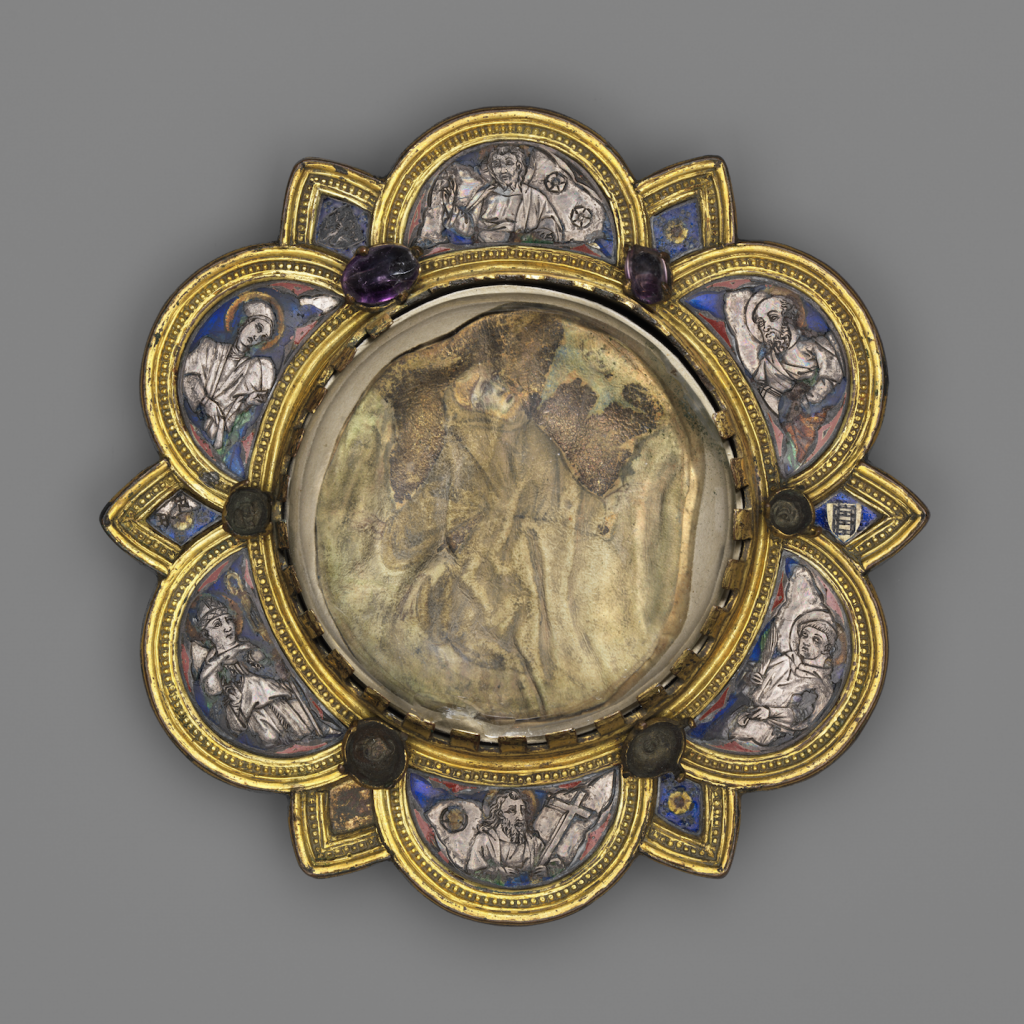
Morse with Saint Francis Receiving the Stigmata (mid-14th century). Courtesy of the Metropolitan Museum of Art.
Wolohojian worked with Laura Llewellyn, the National Gallery’s curator of early Italian paintings. Together, they paired paintings, metalworks, and textiles from their respective institutions with dozens of loans from America and abroad, all to amass a show that bridges monumental altarpieces with smaller objects made for private prayer.
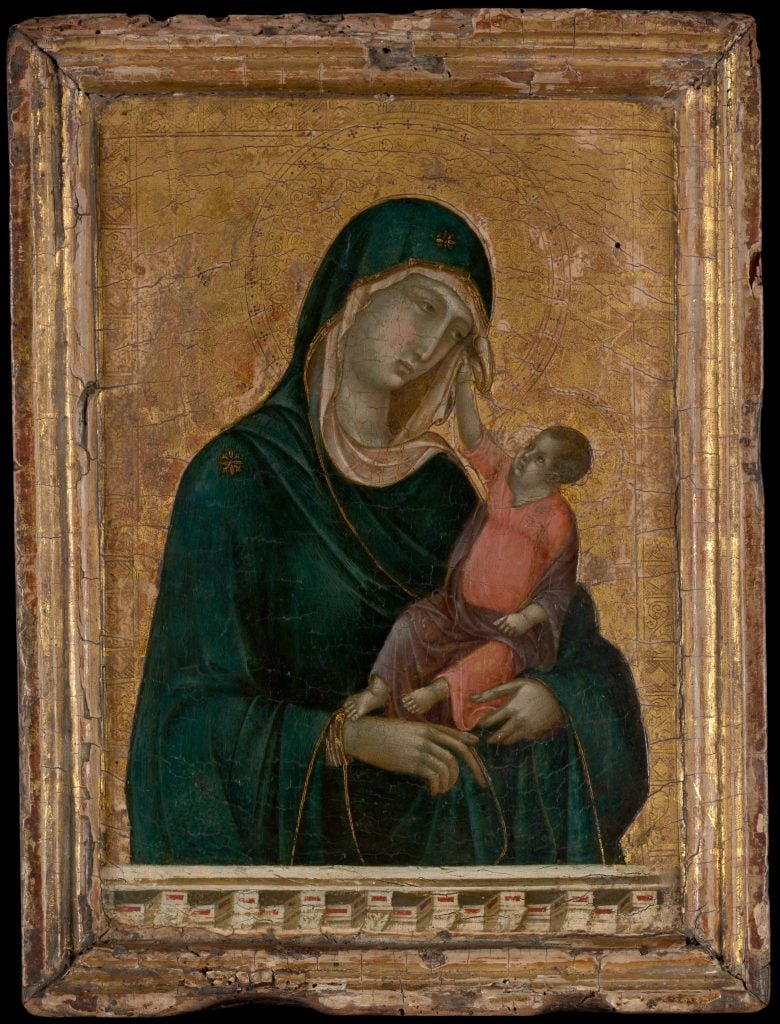
Duccio di Buoninsegna, Madonna and Child (ca. 1290–1300). Courtesy of the Metropolitan Museum of Art.
When the Met bought Duccio’s Madonna and Child (ca. 1290–1300) for $45 million in 2004, the purchase made headlines as the institution’s largest to date. In its own day, Duccio’s small portrait marked the Virgin’s symbolic transition from a cold, remote saint to an emotive mother and intercessor in the eyes of 14th-century Christians. Duccio’s Madonna remains a star of the Met’s holdings. It even appeared in a 2021 video by pop star Halsey.
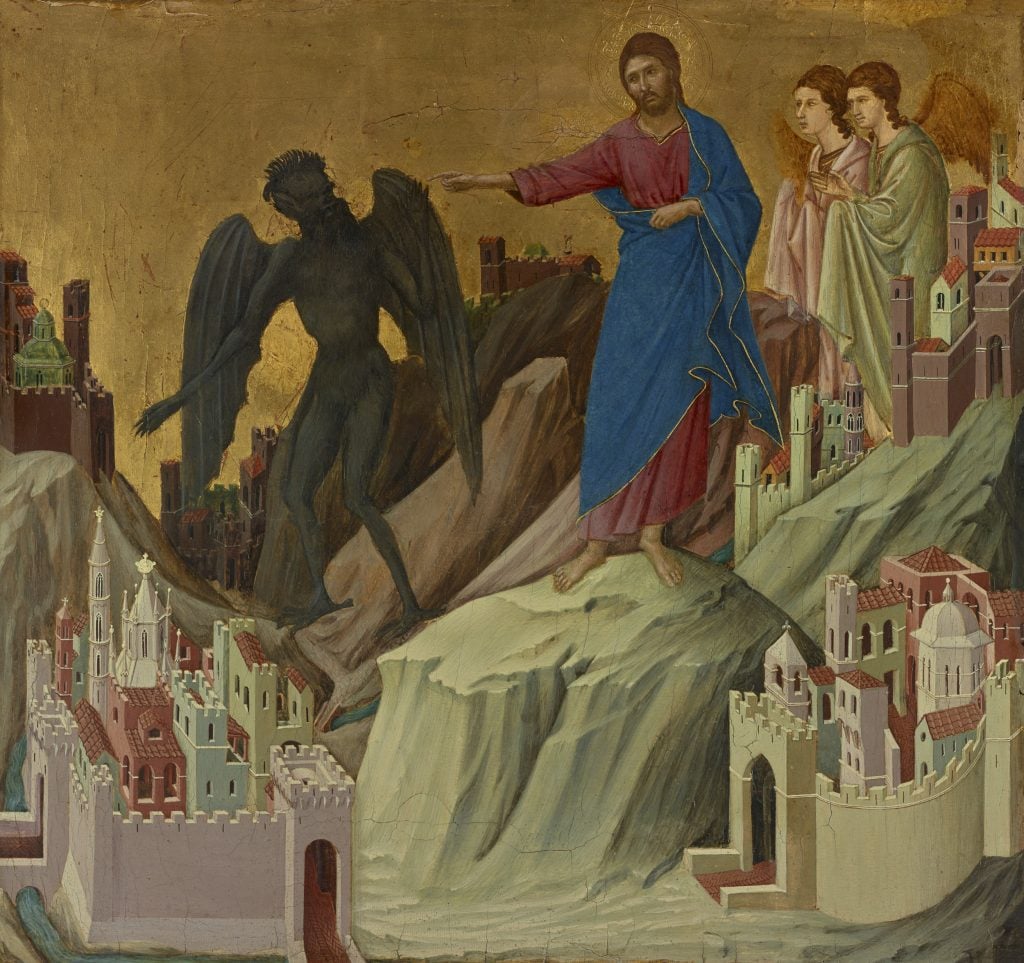
A predella of Duccio’s Maestà, The Temptation of Christ on the Mountain (ca. 1308-1311). © The Frick Collection. Photo: Michael Bodycomb.
The most impressive fruit of the two museums’ endeavor, however, remains the reunification of all eight existing rear panels (called predella) from Duccio’s Maestà (1308-11). This 16-foot-tall feat, commissioned for the Siena Cathedral, became Western art’s first two-sided altarpiece—and the first of its kind to forgo Byzantine hierarchies for a more narrative approach, detailing episodes from Christ’s life. The work was so awe-inspiring, in fact, that it was paraded around Siena after leaving the artist’s studio for its final home. However, because Siena’s Trecento artists fell into relative obscurity, Duccio’s Maestà has been dismantled, damaged, and scattered around the world since 1771.

A predella of Duccio’s Maestà, The Healing of the Man Born Blind (ca.1307/8-11). © the National Gallery, London.
“The Rise of Painting” also reunites all six pieces of the Orsini Polyptych, a smaller devotional gift made by Duccio’s protégé, Simone Martini, who served at the papal court in Avignon and helped disperse the Sienese style throughout Europe. The curators had to summon components like his Christ Carrying the Cross (ca. 1335) from Paris, Antwerp, and Berlin.
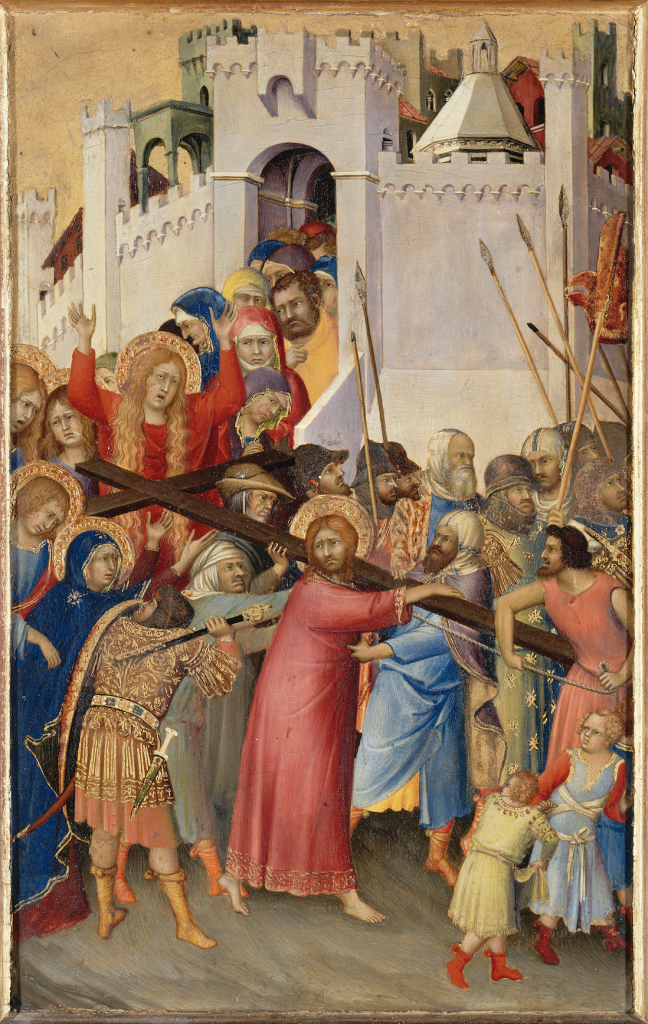
Simone Martini, Christ Carrying the Cross (ca. 1335), from the Orsini Polyptych. © RMN-Grand Palais (Musée du Louvre) / Gérard Blot.
The notably skilled and emotional painter Ambrogio Lorenzetti’s work The Annunciation (1344) rounds out the show’s headliners. But, accompanying homewares and trinkets also humanize such stars—and prove that creativity flowed freely between Siena’s artists and its craftspeople.
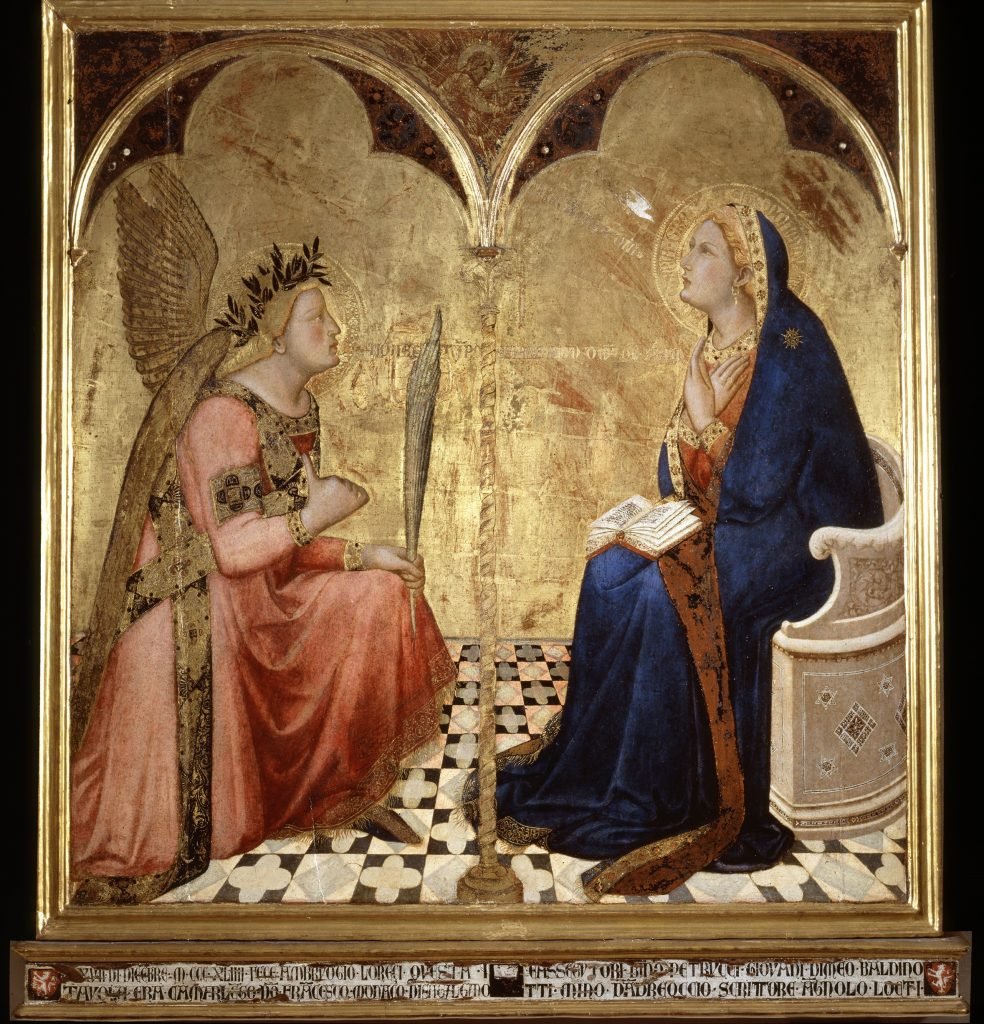
Ambrogio Lorenzetti, The Annunciation (1344). Courtesy of Pinacoteca Nazionale, Siena. © Foto Studio Lensini Siena.
Unfortunately, not one of the artists anchoring this exhibition survived the bout of Bubonic plague that halved Siena’s population starting in 1350. Their legacy, however, lives on.
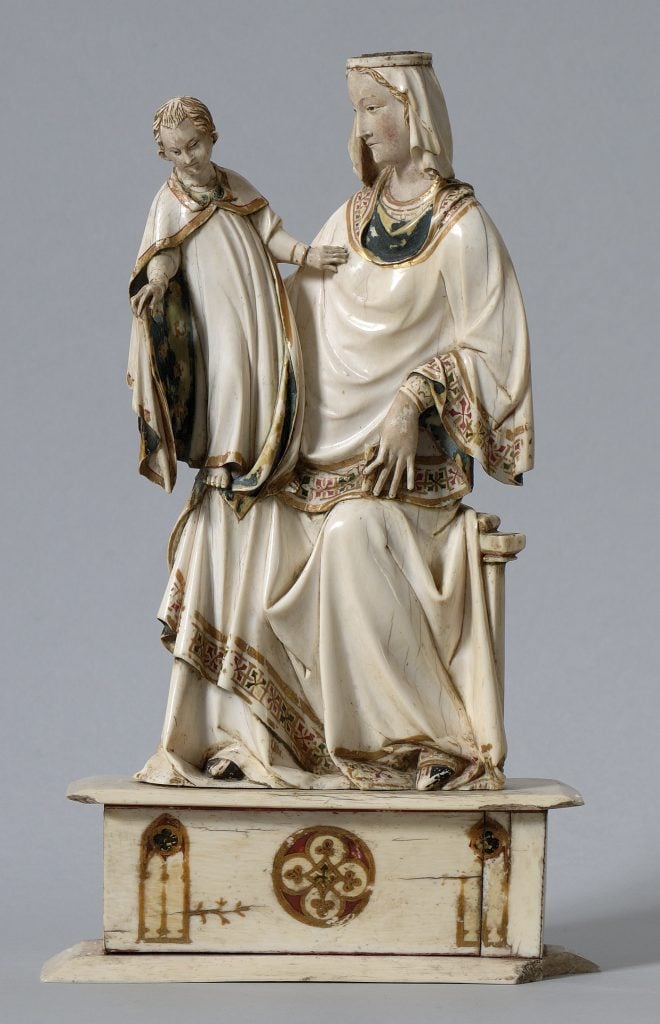
French Artist, Virgin and Child (1290–1300). © Museo Tesoro Basilica di San Francesco.
“Siena: The Rise of Painting 1300-1350” is on view at the Metropolitan Museum of Art, 1000 Fifth Avenue, New York, through January 26, 2025, before opening at the National Gallery, Trafalgar Square, London, on March 8, 2025.

